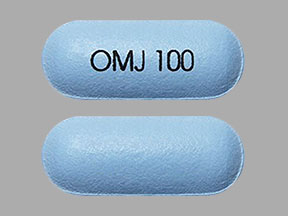Nucynta ER and Alcohol/Food Interactions
There is 1 alcohol/food/lifestyle interaction with Nucynta ER (tapentadol).
Tapentadol Food/Lifestyle
Major Food Interaction
Consumer information for this interaction is not currently available.
GENERALLY AVOID: Alcohol may potentiate the central nervous system (CNS) depressant effects of opioid analgesics including tapentadol. Concomitant use may result in additive CNS depression and impairment of judgment, thinking, and psychomotor skills. In more severe cases, hypotension, respiratory depression, profound sedation, coma, or even death may occur.
GENERALLY AVOID: Consumption of alcohol while taking extended-release formulations of tapentadol may cause rapid release of the drug, resulting in high systemic levels of tapentadol that may be potentially lethal even in opioid-tolerant patients. Alcohol appears to disrupt the extended-release mechanism, causing 'dose-dumping' into the bloodstream. A clinical study evaluated healthy volunteers administered a single dose of extended-release tapentadol (100 mg or 250 mg) with 240 mL of 40% alcohol. The mean peak tapentadol concentration (Cmax) was 48% higher when alcohol was combined with the 100 mg dose and 28% higher when alcohol was combined with the 250 mg dose, as compared to control. Additionally, the systemic exposure (AUC) of tapentadol increased by 16-17% when combined with alcohol.
MANAGEMENT: Patients taking extended-release formulations of tapentadol should not consume alcohol or use medications that contain alcohol. In general, narcotics such as tapentadol should not be combined with alcohol. Modified and/or extended-release tapentadol formulations must also be swallowed whole and not crushed, chewed or divided.
Switch to professional interaction data
Nucynta ER drug interactions
There are 422 drug interactions with Nucynta ER (tapentadol).
Nucynta ER disease interactions
There are 14 disease interactions with Nucynta ER (tapentadol) which include:
- impaired GI motility
- infectious diarrhea
- prematurity
- acute alcohol intoxication
- drug dependence
- hypotension
- intracranial pressure
- respiratory depression
- gastrointestinal obstruction
- liver disease
- renal dysfunction
- seizure disorders
- urinary retention
- biliary tract disease
More about Nucynta ER (tapentadol)
- Nucynta ER consumer information
- Check interactions
- Compare alternatives
- Pricing & coupons
- Reviews (81)
- Drug images
- Side effects
- Dosage information
- During pregnancy
- Drug class: Opioids (narcotic analgesics)
- Breastfeeding
- En español
Related treatment guides
Drug Interaction Classification
| Highly clinically significant. Avoid combinations; the risk of the interaction outweighs the benefit. | |
| Moderately clinically significant. Usually avoid combinations; use it only under special circumstances. | |
| Minimally clinically significant. Minimize risk; assess risk and consider an alternative drug, take steps to circumvent the interaction risk and/or institute a monitoring plan. | |
| No interaction information available. |
See also:
Further information
Always consult your healthcare provider to ensure the information displayed on this page applies to your personal circumstances.


